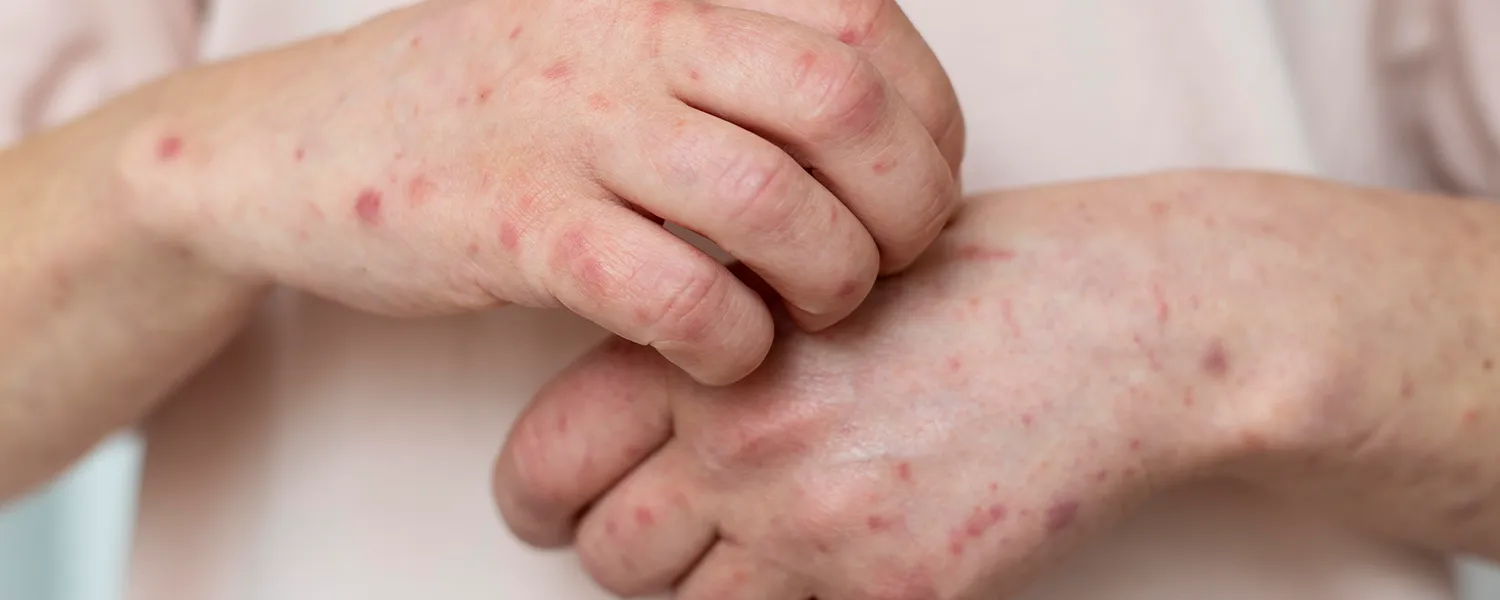Order 500+ lab tests online — no doctor or insurance needed
Immunity Detection and Titer Testing / Measles, Mumps, Rubella (MMR) Immunity Profile Test

Measles, also known as rubeola, is a highly contagious viral infection that has been a significant public health concern for centuries. Despite the availability of effective vaccines, measles continues to cause outbreaks worldwide, particularly in regions with low vaccination coverage. Understanding the nature of measles, its transmission, symptoms, complications, prevention, and global impact is essential to control and eventually eliminate this preventable disease.
Measles has been documented for thousands of years, with references dating back to ancient Egyptian and Indian texts. The disease became more widely recognized in the 9th century, and its association with a specific virus was established in the 20th century. The development of the measles vaccine in the 1960s marked a turning point in disease control, significantly reducing global morbidity and mortality. However, outbreaks still occur due to gaps in immunization programs.
Measles is caused by the measles virus, a single-stranded, negative-sense RNA virus belonging to the genus Morbillivirus within the Paramyxoviridae family. The virus is primarily transmitted via respiratory droplets when an infected person coughs or sneezes. It can remain infectious in the air or on surfaces for up to two hours.
Once inhaled, the virus infects the respiratory mucosa and then spreads via the lymphatic system and bloodstream, leading to viremia. The virus targets immune cells and epithelial tissues, causing widespread systemic infection. The immune response to the virus accounts for many of the clinical features observed.
Measles is one of the most contagious diseases known, with a basic reproduction number (R0) between 12 and 18. This means a single infected individual can potentially infect 12 to 18 susceptible people in a completely susceptible population. Historically, measles was endemic worldwide, but widespread vaccination has dramatically reduced cases.
Despite successes, measles remains endemic in many parts of Africa, Asia, and the Pacific, with occasional outbreaks elsewhere due to vaccine hesitancy or gaps in immunization coverage. The World Health Organization (WHO) estimates that measles caused over 100,000 deaths globally in 2019, although this number has been decreasing over the past decades.
The incubation period for measles is typically 10-14 days after exposure. The disease progresses through several stages:
Measles can lead to severe complications, especially in young children, pregnant women, and immunocompromised individuals:
Diagnosis of measles is primarily clinical, based on symptoms and characteristic rash, especially in unvaccinated individuals or during outbreaks. Laboratory confirmation can be achieved through:
Vaccination remains the cornerstone of measles prevention. The measles-mumps-rubella (MMR) vaccine is highly effective and safe. The recommended immunization schedule typically includes:
In some countries, catch-up campaigns target older children and adults who missed vaccination.
Herd Immunity: Achieving high vaccination coverage (at least 95%) is crucial to establish herd immunity and prevent outbreaks. WHO and UNICEF promote immunization campaigns, surveillance, and public education to close immunity gaps.
There is no specific antiviral treatment for measles. Management is supportive:
Despite the availability of vaccines, measles continues to pose challenges:
Global efforts aim for measles elimination in regions and eventual eradication worldwide. Multiple countries have declared themselves free of endemic measles, but sporadic outbreaks highlight the need for sustained immunization efforts.
Measles remains a preventable yet persistent public health threat. Its high contagiousness, potential for severe complications, and the availability of effective vaccines underscore the importance of comprehensive immunization strategies. Continued vigilance, vaccination coverage, and global cooperation are essential to eliminate measles and protect future generations from this devastating disease.
Childhood Immunization Schedule in the United States Measles: An In-Depth Overview of a Contagious Disease Vaccination Safety and Personal Choice: Navigating the Landscape of Immunization
Cytomegalovirus (CMV) IgG Antibody Test Diphtheria Immunity Test Hepatitis A Immunity Testing Hepatitis A, B, & C Antibodies Confirmation Panel Hepatitis B Immunity Status Test Hepatitis B Surface Antibody, Quantitative Hepatitis C Virus (HCV) Antibody Test Immunoglobulin E IgE Test Lymphocyte Subset Panel Measles Immunity Test (IgG) Measles, Mumps, Rubella (MMR) Immunity Profile Test Mumps IgG Immunity Test Rubella Antibodies Test (IgG & IgM) Rubella IgG Immunity Test Tetanus and Diphtheria Titer Test Tetanus Antitoxoid Titer Test Tuberculosis (TB) Gold Blood Test Varicella Zoster Virus (VZV) IgG Titer Test